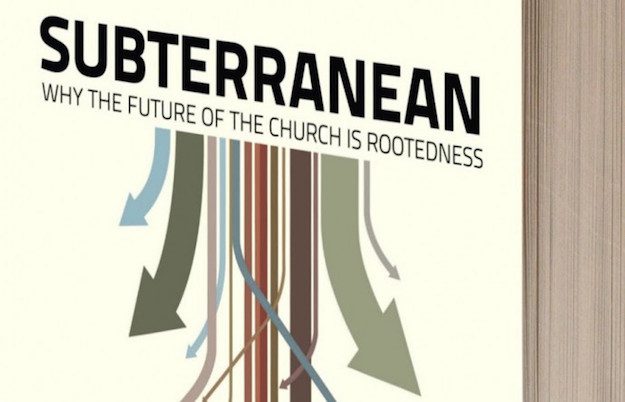If you are like me, you are probably pretty tired of all the claims to have arrived at the newer, better, or realer understanding/expression of missional church. You may also be tired of the tiring angst towards traditional, organized, or – horror of horrors – attractional church.
Some are so tired of it, in fact, that they’ve embraced and perpetuated an opposite kind of propaganda – the propaganda, as it were, of missional agnosticism, chiding the whole lot of it as a bunch of hype and hoopla over buzzwords that made early millennial ministries feel good about being cool, as if coolness was central to the gospel itself (it’s missional, bro!).
And if this missional fatigue has been a particular hangup for you, as it has sometimes been for me, and if you are perhaps even tempted to chuck it all and go liturgical (like, real liturgical, not a bunch of fedora dudes lighting candles and calling it liturgical), then listen in for a sec. Because I think there’s something to this missional thing, and it may not be what all the books and blogs have said it is.
Namely, the books and blogs seem to have focused everything on form. Not the same form, mind you – because that would make too much sense – but a variety of formal considerations and formulaic expressions that entrepreneurial pastor-planter-awesome-dudes can choose from as they “go” missional. I’m not saying form is bad; but because form has been the overwhelming focus, the meaning of missional has often become…meaningless.
For instance: Can a megachurch be missional? Yes, say the Mars Hill’s and their triumphant hagiographic autobiographical accounts of missional megachurch planting in the early 00’s. What’s needed, really, is relevance – a contextual message and ministry that makes use of technology and creativity to reach culture.
But others, like Frost Hirsch and Hirsch Frost (wait, are they different dudes?) say, HELL NO. Megachurches canNOT be missional. (They are softening on this now, btw; it’s more of a lowercase hell no.) These conjoined missiologists would say that it has to be organic, it has to be radical, it has to be out-of-bounds and almost inherently disorganized in order to be really missional. The only way to be culturally embedded enough, it would seem, is to be…very small.
Loads of Frost Hirsch disciples will fight tooth and nail against a) budgets, b) church names, c) church websites, d) leaders who call themselves leaders, e) weekly large gatherings, d) the word “attractional” (the “a” word), e) the word “centralized” (the “c” word), and d) any more structure than a really bad junior high youth group Bible study. (You know, “Um, so, guys, how’s it goin’? How are things? Been readin’ anything cool in your Teen Study Bible? No? Never mind, let’s play dodgeball!” That sort of thing.)
But more recently, there have been some really refreshing books that have popped up in the missional praxis genre to counteract this either-or trend, the most notable of which to me has been Halter/Smay’s (missional guys follow the superhero/sidekick model apparently) AND – The Gathered and Scattered Church. Having met and spoken with Halter/Smay’s hero-half (Hugh Halter, a.k.a., HalterMan), I can see the same missional fatigue producing a move in a positive direction – out of this obsession with form, and into the deeper meaning of missional. (It appears that the upcoming Sentralized conference will probably be another move in this direction; and much of what is happening with Verge, GCM, and the Ecclesia Network are reflections of a more formally diverse direction as well.)
So, standing now in the second year of the second decade of the new millennium, there appears to be a good shift towards what missional really means. One that avoids the either-or of relevant megachurch and embedded microchurch. Missional is more than these forms; it has formal implications, but it is not essentially about form. Instead, it is a definitive theological posture that becomes embodied in specifically and locally sent communities of witness.
I wonder though…if “relevant” is not enough, and “incarnational” or embedded is not enough, is “gathered and scattered” sufficient to describe an essentially missional expression? In the next post, I’ll argue for terminology similar to, but different from, the AND theory of Halter/Smay. And it will be based on the theological – not merely formal or practical – basis of what missional means.











